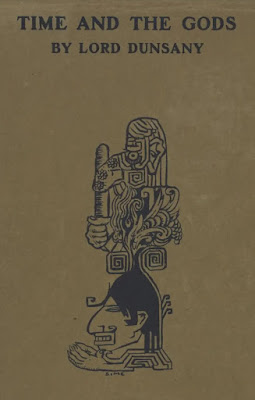Lord Dunsany visited the United States five times, the final three times in the 1950s when he went to California. There he stayed with friends, including Hazel Littlefield Smith, who lived in Palos Verdes Estates, a coastal town established in 1923 as a planned community to the south and west of Los Angeles. According to the 1950 US Census, its population was less than two thousand people (though that climbed to nearly ten thousand by 1960). It is now one of the wealthiest cities in the United States.
The exact dates of his visits are difficult to ascertain, but his first trip in 1953 was from around mid-March to sometime in early June. The second and third trips were in 1954 and 1955, probably around the same late-winter-spring dates. Another trip was planned for 1956 but had to be cancelled. Dunsany traveled by himself, without his wife, certainly for the 1953 visit, and likely for the other two trips.
His primary hostess was Hazel Littlefield Smith (1889-1988--she died about a week shy of her 99th birthday), the wife of Dr. Dennis V. Smith (1887-1975). She was educated at the University of Michigan (B.A. 1913), and after her marriage she and her husband, an opthalmologist who was a medical missionary, spent thirteen years in Peking, from 1915-1928. They settled in Palos Verdes Estates in 1930, and lived until 1962 in a house they named Ming Manor, reflecting their interests in Chinese life, which remained a considerable focus.
As Hazel Littlefield, Mrs. Smith published through a vanity press in 1959 a memoir Lord Dunsany: King of Dreams, which recounts her friendship with Dunsany. The first trip of 1953 gets the most coverage. The book also has a nice selection of photographs, and I reproduce a few of them below, augmented by a few others to show Dunsany in the last five years of his life (he died in October 1957 at the age of 79).
The above photo (by Al Frederic) shows Dunsany in the library at Ming Manor. The shelves behind his head are filled with a set (24 volumes) of the 1929 fourteenth edition of the Encyclopædia Britannica. Of the books on the top shelf, I can discern H.G. Well's The Outline of History, among a few others.
This photo (also by Al Frederic) shows Dunsany in the garden at Ming manor.
This photo is by the well-known photographer Sanford Roth (1906-1962), and appears in his posthumous
Portraits of the Fifties (1987), compiled by his widow. There is no date attached to it, but a place: "Palos Verdes, California." One suspects it was possibly taken at Ming Manor, but Roth is not mentioned in Hazel Littlefield's memoir.
Another photograph (credit unknown) of Dunsany, though I'm uncertain where it first appeared. (Anyone know? A cropped version appears without any credit in August Derleth's Thirty Years of Arkham House 1939-1969, published in 1970.) The exotic decorations again suggest Ming Manor.
Dunsany seems to have been a fastidious dresser in these photographs. Always in a suit and tie, with a waistcoat, and a fresh flower on his lapel (and sometimes with a pocket square in the chest pocket). All of these photographs taken in California must date from 1953-1955.




















